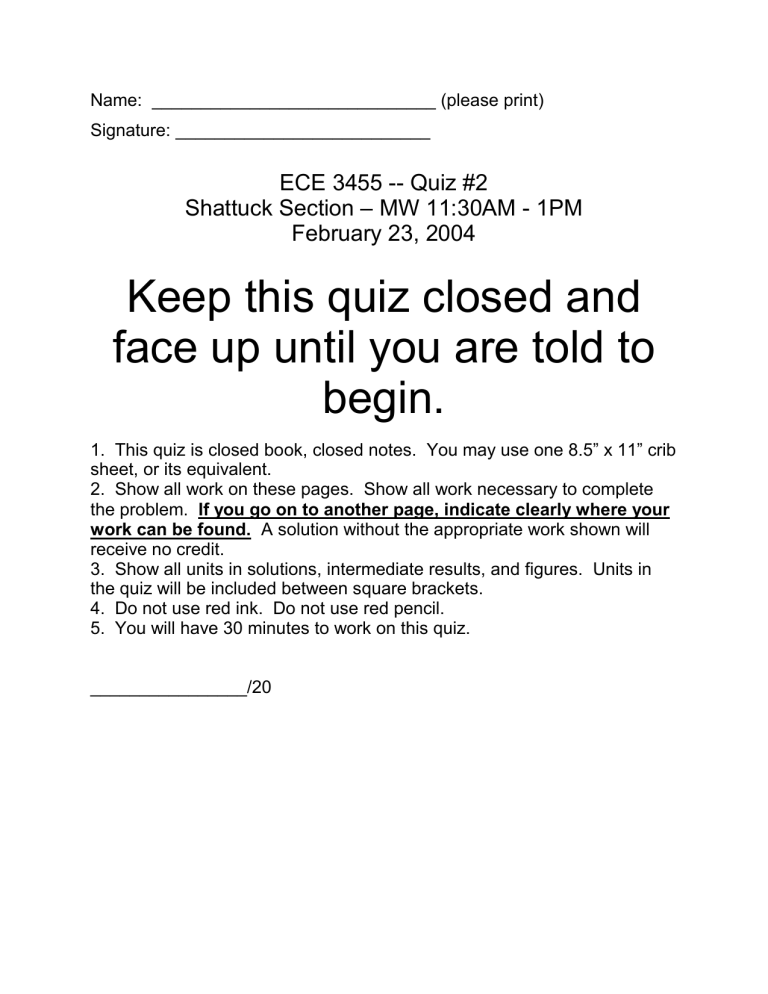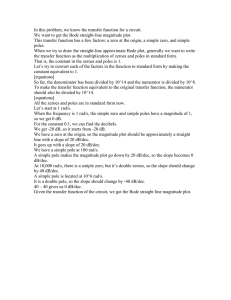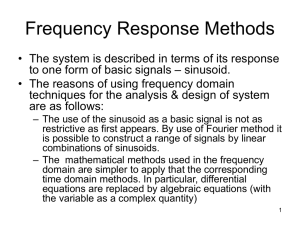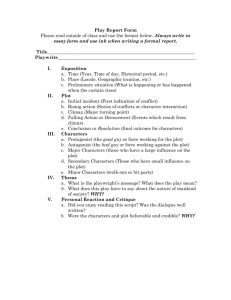3455_QU2_Shattuck_Spring2004

Name: _____________________________ (please print)
Signature: __________________________
ECE 3455 -- Quiz #2
Shattuck Section – MW 11:30AM - 1PM
February 23, 2004
Keep this quiz closed and face up until you are told to begin.
1. This quiz is closed bo ok, closed notes. You may use one 8.5” x 11” crib sheet, or its equivalent.
2. Show all work on these pages. Show all work necessary to complete the problem. If you go on to another page, indicate clearly where your work can be found.
A solution without the appropriate work shown will receive no credit.
3. Show all units in solutions, intermediate results, and figures. Units in the quiz will be included between square brackets.
4. Do not use red ink. Do not use red pencil.
5. You will have 30 minutes to work on this quiz.
________________/20
The straight-line approximation to the magnitude Bode plot for a circuit is shown in Figure 1, on the next page. It is known that the phase of the transfer function at
10[Hz] is –180 º . Use the blank semilog graph paper, on the page that follows the magnitude plot, to plot the straight-line approximation to the phase Bode plot for this circuit. If you need to make any calculations, please show these calculations below. At a minimum, please indicate in the space below the location of all poles and zeroes in this frequency range.
Please note that in the magnitude plot, the plot is the dark, solid line. The dashed lines are provided to make the graph easier to read, and to provide information that may be useful to you.
120
100
80
60
40
20
0.1
|H(
)| dB
1
Figure 1
10 100 1,000 10,000
, [rad/s]
ECE 3455 -- Quiz #2 – February 23, 2004 –11:30AM – 1:00PM MW Shattuck Section Solution
The straight-line approximation to the magnitude Bode plot for a circuit is shown in Figure 1, on the next page. It is known that the phase of the transfer function at
10[Hz] is –180º. Use the blank semilog graph paper, on the page that follows the magnitude plot, to plot the straight-line approximation to the phase Bode plot for this circuit. If you need to make any calculations, please show these calculations below. At a minimum, please indicate in the space below the location of all poles and zeroes in this frequency range.
Please note that in the magnitude plot, the plot is the dark, solid line. The dashed lines are provided to make the graph easier to read, and to provide information that may be useful to you.
|H(
)| dB
Figure 1
120
100
80
60
40
20
0.1
1 10 100 1,000 10,000
, [rad/s]
Looking at this plot, we can see that the slope of the magnitude plot changes in three places: at
= 2[rad/s], 1,000[rad/s], and at 5,000[rad/s]. If we read the plot carefully, we see that the slope for frequencies less than
= 2[rad/s] was +40[dB/dec]. (Note that the magnitude increased by 40[dB] between 0.1[rad/s] and 1[rad/s].) After 2[rad/s], the slope is zero, so the
slope has decreased by 40[dB/dec]. From this, we conclude that there must be two poles at
= 2[rad/s]. I will call these poles p
1
and p
2
.
Next, we note that there is an increase in slope of 20[dB/dec] at
= 1,000[rad/s], so there must be a zero at that frequency. I will call this zero z
1
. Similarly, the slope decreases by
40[dB/dec] at 5,000[rad/s], so there must be two poles at that frequency. I will call these poles p
3 and p
4
.
Then, we note that the phase of the transfer function at 10[Hz] is –180º. From the units, it should be clear that this information is for the frequency f, so this is the same frequency as
(2 times
times 10)[rad/s], or 62.8[rad/s]. We are now ready to plot.
Remember that the straight-line approximation to the phase Bode plot has a change of slope a decade above and a decade below each pole or zero. Therefore, we will have six changes of slope.
The plot is shown below.
Phase Bode Plot
H(
) in [deg]
0
-90
-180
-270
-360
, [rad/s]
0.1
1 10 100 1,000 10,000 p
1
/10 p
2
/10
10p
1
10p
2 z
1
/10 p
3 p
4
/10
/10
10z
1
10p
1
10p
2
The plot does what we should expect. Over this six cycle frequency range, we pass four poles and one zero. Thus, the phase should decrease 360º due to the poles, and increase 90º due to the zero, for a net change of –270º over this range. This is what we have in the plot above.








